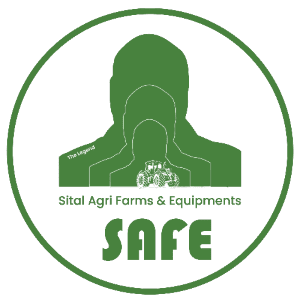The construction industry continues to evolve rapidly, and 2025 is no exception. More intelligent machines and better training opportunities make learning how to operate construction equipment more accessible than ever. Whether aspiring to become a heavy equipment operator or simply curious about the industry, this beginner’s guide will help you understand the essentials.
From safety tips and control basics to knowing the types of machines you’ll be working with, we’ve covered everything you need to kickstart your journey into construction machinery.
1. Why Learn to Operate Construction Equipment in 2025?
The demand for skilled equipment operators is growing globally. With smart construction tech and automation integrated into many machines, operators must be familiar with mechanical controls, digital interfaces, and diagnostic systems.
Some reasons to learn construction equipment operation today:
- High demand and better pay for certified operators
- Opportunities in infrastructure, mining, and urban development
- Advancement in AI-based controls and machine learning tech
- Increased safety and efficiency with modern equipment
2. Types of Construction Equipment You Should Know
Before hopping into a machine, it’s crucial to understand the types of equipment used on modern job sites. Here are some common ones:
- Excavators: Used for digging, trenching, and material handling. Includes attachments like buckets, hammers, and augers.
- Bulldozers: Best for pushing large quantities of dirt or debris. Great for leveling land and clearing job sites.
- Backhoe Loaders: A mix of excavator and loader – ideal for smaller tasks and tight spaces.
- Wheel Loaders: Used for moving materials like gravel, sand, or dirt. They have a front-mounted bucket and offer high lifting capacity.
- Cranes: Vital for lifting heavy materials vertically. Requires a high level of certification and skill.
- Skid-Steer Loaders: Compact machines that can maneuver in tight areas. Perfect for landscaping and small construction sites.
- Compactors and Rollers: Used for soil compaction and road building. Crucial for creating strong foundations.
3. Basic Controls and Functions
Although each machine has its unique controls, there are some standard basics you’ll find across most construction equipment:
- Joysticks – Used for movement and control of the arm/bucket.
- Pedals – Operate brakes or auxiliary functions.
- Levers and Buttons – Adjust speed, hydraulics, lights, and other systems.
- Display Panels – Modern machines have digital screens for diagnostics, GPS, and camera views.
Pro Tip: Always read the operator’s manual and take time in a simulator or with a trainer before using real equipment.
4. Safety First: Essential Tips for Beginners
Operating heavy machinery is dangerous if not done correctly. Safety should always be your number one priority.
Key Safety Practices:
- Inspect the equipment before each use. Check fluid levels, tire pressure, and leaks.
- Use protective gear – hard hats, safety boots, gloves, and visibility vests.
- Never operate a machine without proper training or certification.
- Understand your environment – be aware of other machines, workers, and power lines.
- Use seatbelts and follow all safety protocols.
In 2025, many machines will have built-in safety sensors, cameras, and alerts, but nothing replaces operator awareness and caution.
5. Training and Certification in 2025
Getting trained and certified is easier and more flexible today, thanks to online learning, AR/VR simulations, and hybrid courses.
Training Methods Include:
- Online courses for theoretical knowledge.
- Simulator training for hands-on practice.
- On-site apprenticeships to learn from professionals.
- Certification programs offered by recognized organizations like:
-
- NCCER (National Center for Construction Education and Research)
- OSHA (Occupational Safety and Health Administration)
- Local technical institutes or unions
Many employers now require certification before letting you operate high-risk machines.
6. Technological Advancements in Construction Equipment
Construction equipment in 2025 will be more innovative, more efficient, and eco-friendly.
Tech Innovations to Watch:
- GPS & Telematics – Real-time tracking, fuel monitoring, and usage analysis.
- Autonomous Operation – Semi-autonomous bulldozers and dump trucks are becoming more common.
- Electric & Hybrid Machines – Reduced emissions and noise levels.
- Remote Control Systems – Control machines from a distance, improving safety in hazardous areas.
Staying updated with these technologies gives new operators a serious advantage.
7. Dos and Don’ts for New Equipment Operators
Do:
- Read the machine’s manual.
- Take breaks and stay hydrated.
- Communicate clearly with the ground crew.
- Practice in a controlled environment.
Don’t:
- Rush to learn everything at once.
- Ignore warning lights or strange sounds.
- Overload the machine beyond its rated capacity.
- Operate under the influence or when tired.
8. Career Path and Opportunities
Starting as an equipment operator can lead to numerous construction and civil engineering roles.
Possible Career Paths:
- Equipment Specialist
- Site Supervisor
- Safety Officer
- Fleet Manager
- Project Manager
You can climb the ladder quickly with experience, certifications, and a good safety record.
Conclusion
- Operating construction equipment is no longer just about strength and instinct — skill, precision, and tech-savvy. As we move deeper into 2025, the industry favors well-trained, safety-conscious, and adaptive operators to digital tools.
- If you’re ready to begin your journey, start with training, understand the machines, stay updated with new technology, and always prioritize safety. With the proper foundation, you’ll not only operate machines — you’ll help build the future.

